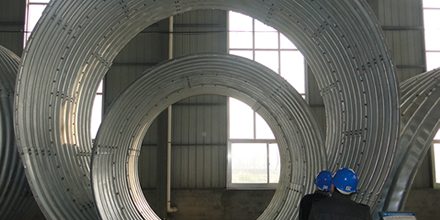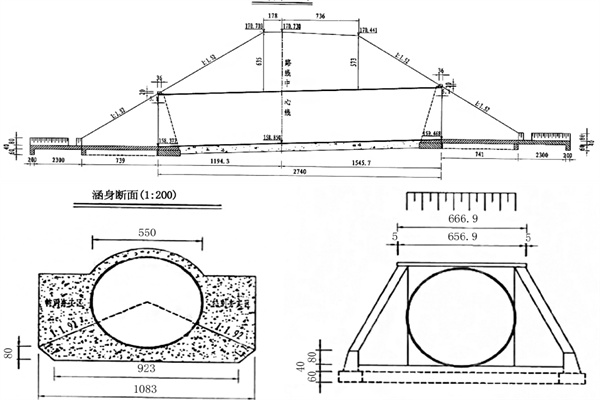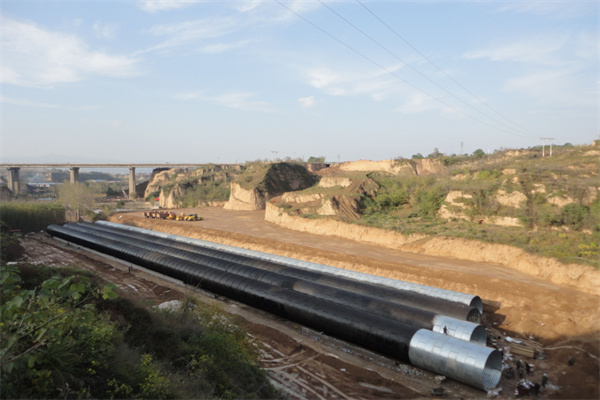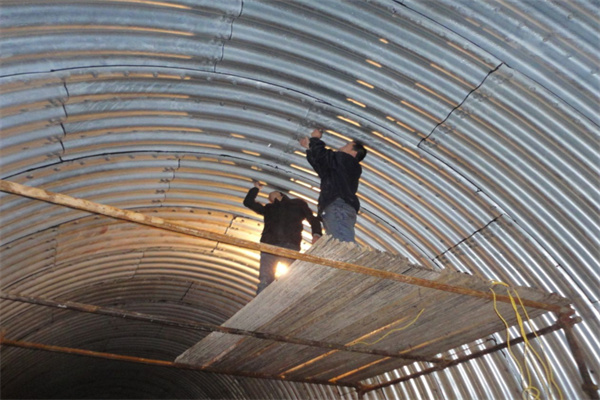Assembled Steel Corrugated Pipe Culvert Usag In Highway Project
1.Steel corrugated pipe culverts have advantages of fast construction speed and environmental benefits, and are increasingly being used in highway culverts in channel construction. Based on the application example of steel corrugated pipe culvert on a certain highway, analyze the phase of steel corrugated pipe culvert, to Summarize the advantages, disadvantages, and applicability of traditional structural culverts, and summarize the construction technology and quality control points of steel corrugated pipe culverts,Provide experience for the application of steel corrugated pipes in highway engineering in the future.
Shunchang Interchange of Shunshao Expressway requires setting up A water passage culvert, originally designed as a 5 × 5 m slab culvert with a length of 27.4 m. Afterwards Design change to steel corrugated pipe culvert, steel corrugated pipe adopts standardized design, Factory standard production and on-site assembly.
Steel corrugated pipe model 550-5.5, diameter 5.5 m, wall thickness 5.5 mm, wave height 64 mm, wave distance 230 mm. The pipe body is made of Q235 hot-rolled steel plate, and the surface of the steel plate is hot-dip plated Zinc treatment, zinc plating amount not less than 600 g/m2, average thickness not less than 64 μ M.
Assembled pipes with a length of 1.05 meters per section, divided into 6 pieces per section, and used between the pieces M20, grade 8.8 strength bolt connection [1]. The plates are sealed with foam gaskets Sealing. The elevation and cross-sectional views are shown in Figure
Base and sand cushion layer
Materials and equipment in place → measurement and layout → excavation of foundation pit → foundation and sand cushion
Layer → pipe installation → sealing and anti-corrosion treatment → backfilling → inlet and outlet treatment.During the construction process of steel corrugated pipe culverts, materials and equipment are in place, measurement and layout are carried out, and the foundation is laid out Pit excavation
Steel corrugated pipes do not require concrete foundations. The foundation adopts an 80 cm thick gravel layer, which is roughly leveled by a loader, manually combined with fine leveling, and laid and compacted in layers. The virtual laying thickness of each layer of filling material is controlled below 25 cm, and compacted by a vibrating roller with a self weight of 20 tons. Lay 10 cm thick well graded coarse sand on the gravel surface layer.
Corrugated Pipe culvert body installation
(1) Bottom plate assembly: Based on the midpoint of the central axis, position the first corrugated plate and extend it to both sides until both ends are reached.
(2) Circular assembly: Assemble from bottom to top in sequence. The upper plate of the overlapping part covers the lower plate, with an overlapping length of 120 mm. After aligning the connecting holes, the bolt is inserted into the hole from the inside out, and then the washer and nut are installed, and the nut is pre tightened.
(3) Vertical assembly: The assembly between two pipe sections, the end of the upstream pipe section should be placed on the inner side of the downstream pipe section and not reversed. The overlap between the front and rear pipe joints is 50mm.
(4) All assembly is completed, check the linearity, use a fixed torque pneumatic wrench, tighten all bolts with a pre tightening torque of 340 ± 70 N · m, and mark the bottom bolts with red paint after tightening. All bolts (including longitudinal and circumferential joints) should be tightened before backfilling to ensure that the overlapping parts of the ripples are tightly nested together.
Place sealing gasket and spray PVC foam sealant at joints and bolt connections. After the assembly of the entire pipe body is completed, evenly apply anti rust coating on the inner and outer walls of the pipe Fermented bean curd asphalt is melted twice, with a thickness of 0.4~0.5 mm.
 Products
Products Application
Application




